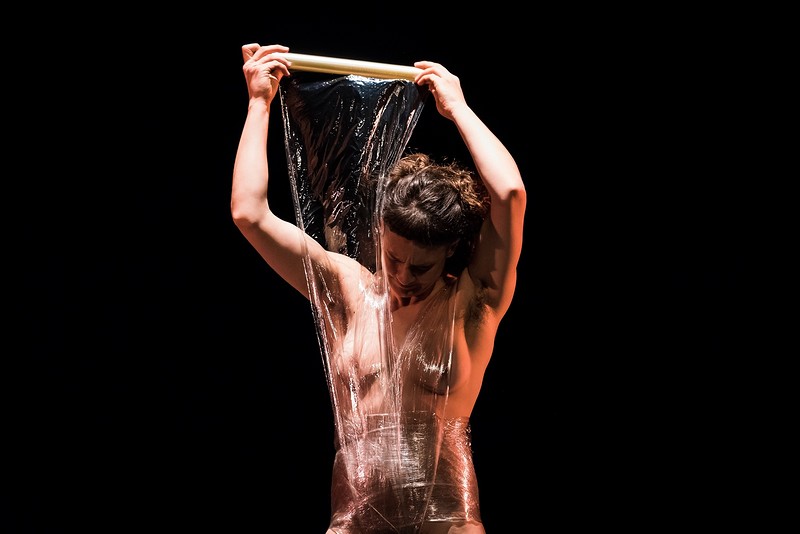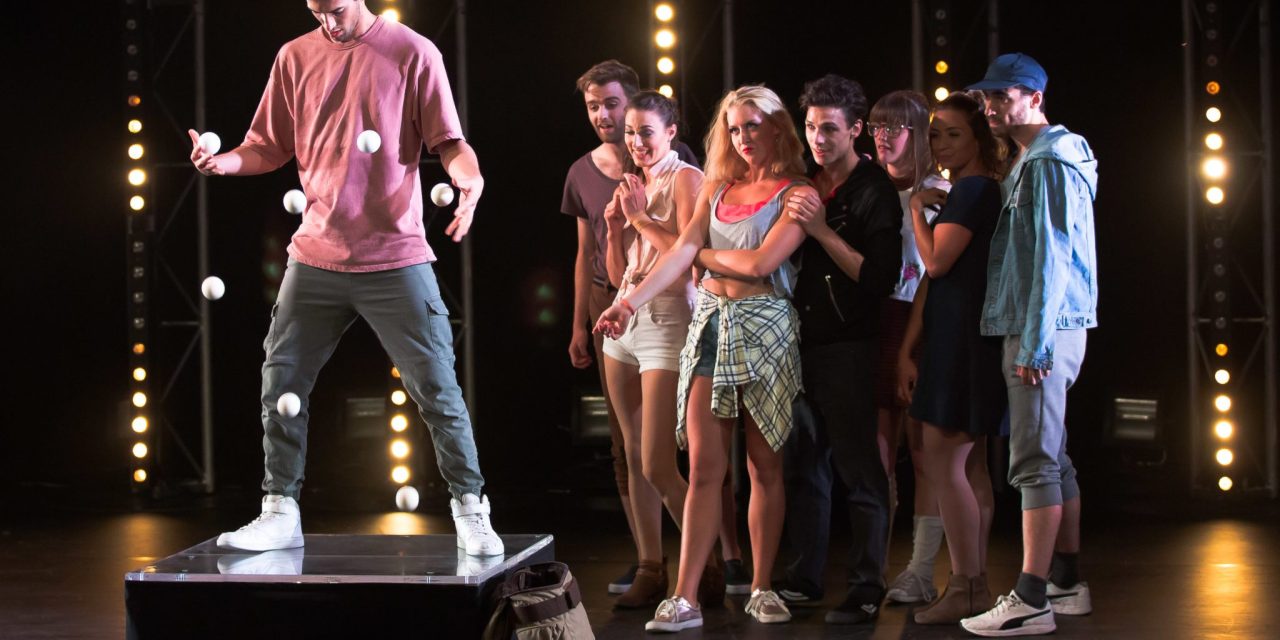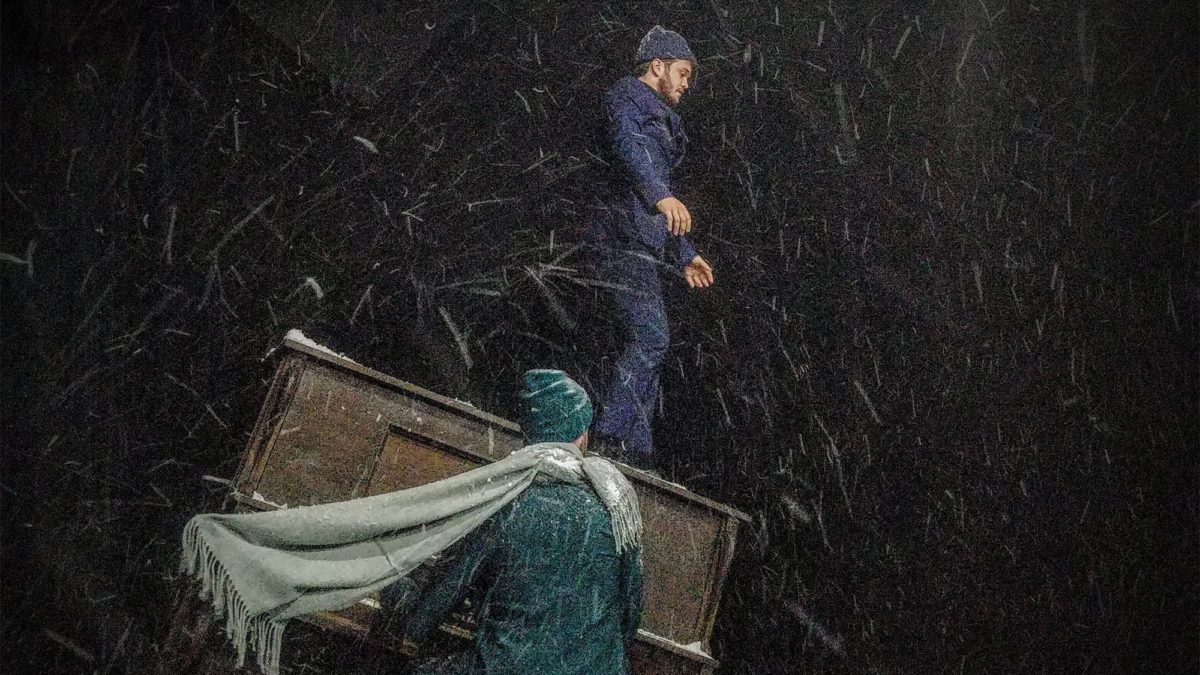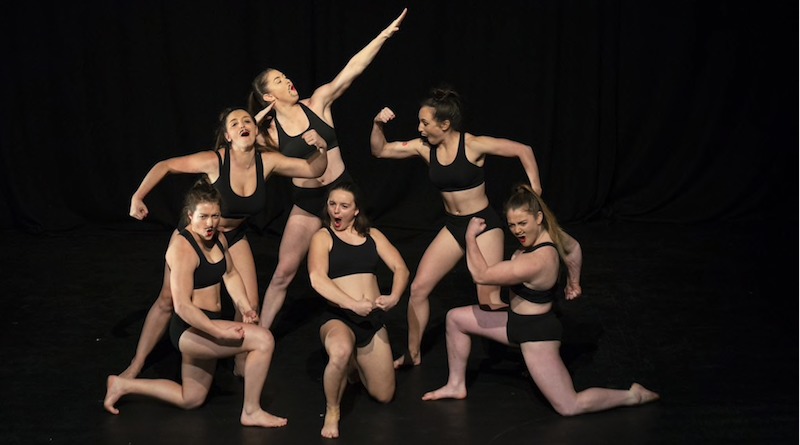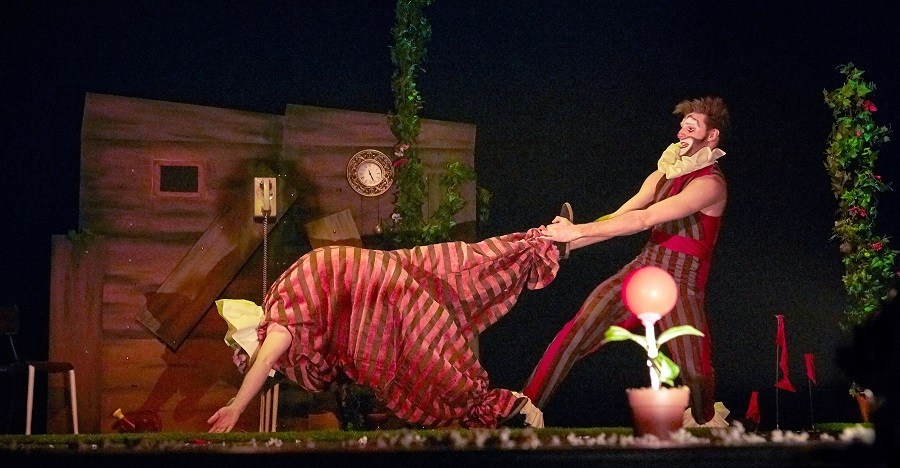A naked woman walks into a room. (That could be the opening line for a dodgy male comedian’s routine, right?). There’s not much in the room, but there is a free-hanging rope – the French term corde lisse says it so much more elegantly.
The rope becomes a serpent. Puppetry, kind of. The serpent speaks: EAT THE APPLE says the serpent. But, says Eve, God told us not too, said we would die if we did. DON’T EAT THE APPLE, said God. She takes her chances. She eats the apple – eats it noisily, with great gusto, enjoying every bite, every chew. Yeah, go Eve! The knowledge is yours to chew over, to digest…
She gives us a run-down of her body: two arms, two elbows (around halfway up the arms, good for bending), two legs (good for running, dancing, climbing ropes). Two breasts, two bottom cheeks, two lips. Canny look. On her face. Two eyes – she has a party trick, she can make her eyes move independently. She demonstrates. Excellent! She mentions that her other party trick is Irish Dancing. (Well, with a name like Murphy, you’d expect no less.) She doesn’t demonstrate that skill, but we live in hope…
The room is full. She’s in control – like the best stand-ups. The audience is eating out of her hand. She’s not a stand-up comedian, but she walks and talks the mores of stand-up. We even, quite often, forget she is naked. It has become normal, how she is and what she is at this time, in this space. She climbs the rope. Then we remember she is naked, because it is quite hard to really work the rope naked – your skin gets frayed and burnt. it’s a challenge.
There are stories – confessional/autobiographical stories – we are somewhere in-between stand-up and performance art. There are punchlines. The favourite is ‘What a cunt’. The teenage her agreed to have sex with him, but then it turned nasty. He pinned her down with his knee, and wanked off over her face. What a cunt! A slightly older her was taking a little rest in a bedroom at a party and a guy lay down next to her. She said no, and dozed off, but when she woke up, her phone had been nicked. What a cunt! Each punchline sends her up the rope, writhing and twisting, climbing high, higher, highest and hurtling to the ground.
Now we have a solution to the nakedness rope-burn dilemma – clingfilm! Perfect costume! She wraps herself up in this parody of the aerialist’s shiny leotard, and up she goes again. She climbs, wraps the rope around her, twists and turns and splits and drops. Circus skills are just one component of this multi-artform, multi-layered work – but the skills are consummate, honed. This is important. She’s an acclaimed contemporary circus artist, and this is her medium of expression.
There’s the live chatter – about teenage sexual assault, about coming of age, about heartbreak, about gender and identity, about adult Queer life in the here and now – and there are the lip synchs. She channels a couple of male American comedians. I don’t know who they are – I know very little about male American comedians – so I ask. One is Rodney Carrington. (I look him up. He has a YouTube series called Talking to My Pecker. I snigger. I can’t help myself.) He sings Country songs. She sings along to Florence and the Machine. ‘It hurts.’ And – yes, oh yes! – there is Irish Dancing. Naked Irish Dancing to the tune of ‘When You’re Smiling’.
Contra is directed by Ursula Martinez, and perhaps because I know this, I see evidence of Ursula in the comic timing, the facial expressions, and – especially – in that little mouth-half-open, twinkly-eyed pause before the killer line. There are also, inevitably, echoes of Adrienne Truscott’s Asking For It: a One-Lady Rape about Comedy. But this is no bad thing: I’m talking echoes, resonances, associations. I’m talking being part of a noble tradition, a continuum, a monstrous regiment of women. Associations aside, Laura Murphy is very much her own woman, and Contra is a big, bold statement. It’s a very well constructed piece, writing and direction working hand-in-glove. Seeds planted reap harvests later: the tiresome ‘Give us a smile, love’ morphing into the surreally funny, vaudevillian ‘When You’re Smiling’ scene; the promise of Irish Dancing fulfilled.
I keep coming back to the Irish Dancing. This neat, tight, orderly dance form – the pride and joy of the Irish Catholic mothers watching the little girls at the Feiseanna with their perfect dark-haired ringlets (Laura has perfect dark-haired ringlets) kicking their legs high, arms straight by the side, in the one-two-three-four-five-six-seven slip jigs and reels and hornpipes. To dance it naked feels like the ultimate subversion – sacrilege, almost. Eve breaking free of the shackles of patriarchy, as represented by church and state. Go Eve, go! Dance, dance, dance!
Laura Murphy: Contra is presented in association with Aurora Nova

